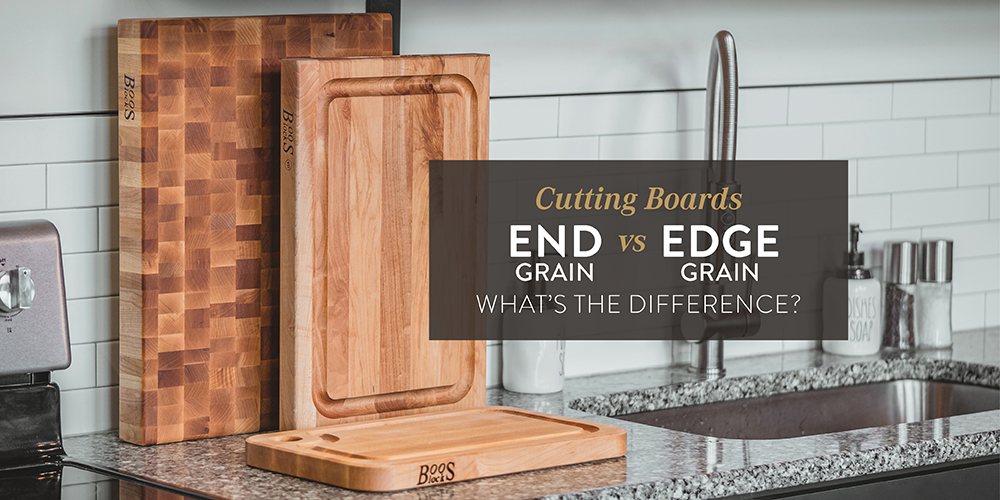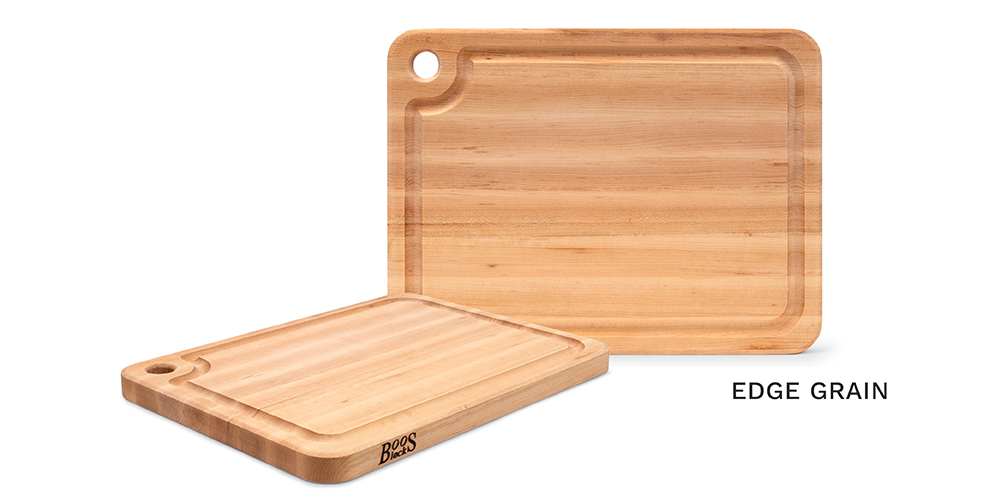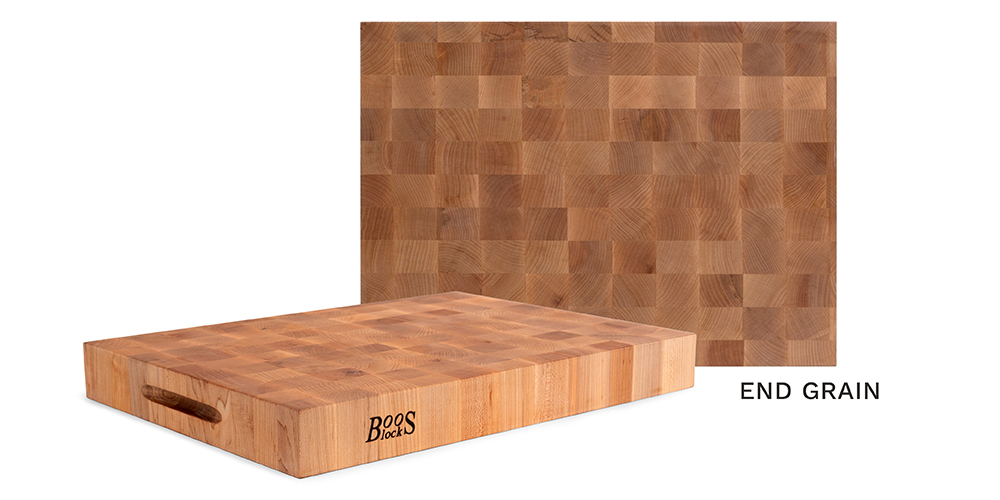End Grain vs Edge Grain Cutting Boards: What’s the difference?

The primary contrast between edge grain and end grain cutting boards lies in the their wood grain orientation and construction methods, each offering its own set of advantages.
Edge Grain Construction
Beautiful edge grain cutting boards are most common and affordable. They are formed by laying long strips of premium hardwood rails of maple, cherry or walnut side by side and gluing them together. The wood fibers run horizontally. Edge grain cutting surfaces are considered knife-friendly compared to other materials like plastic or glass cutting boards. Over time, you may notice visible knife marks on the board. This can easily be remedied by giving it a quick sprucing up. Sand the board with the grain of the wood and apply John Boos Mystery Oil and Board Cream to reveal an entirely fresh, new work surface.

End Grain Construction
Stunning end grain cutting boards are created by cutting short square pieces of maple, cherry or walnut hardwood and arranging them vertically and stood on end. End grain boards demonstrate a self-healing process in that when a knife cuts into an end grain board’s surface, it slides in between the wood fibers, the fibers separate, and then close back up, keeping your knife edge sharper, longer. The end grain construction process is more labor intensive than edge grain and may need more oiling to maintain its appearance and to prevent drying out over repeated uses and washings.

When it comes down to it, both solid wood prep surface constructions are equally virtuous when dealing with food, safety, and durability. Both styles are made of natural premium hardwood, ideal for safe food prep surfaces and for impressive food displays while entertaining. End grain cutting boards are often considered the superior option due to their knife-friendly surface and resistance to deep cuts. However, they can be more costly due to the construction process. Edge grain cutting boards are still a wise option and can be a more affordable choice. Pick the construction that is more aesthetically pleasing to your eye or kitchen style. Remember that proper care and maintenance is the key that will extend the life of your cutting board, whether you choose end or edge grain, to keep it in excellent condition for years to come.